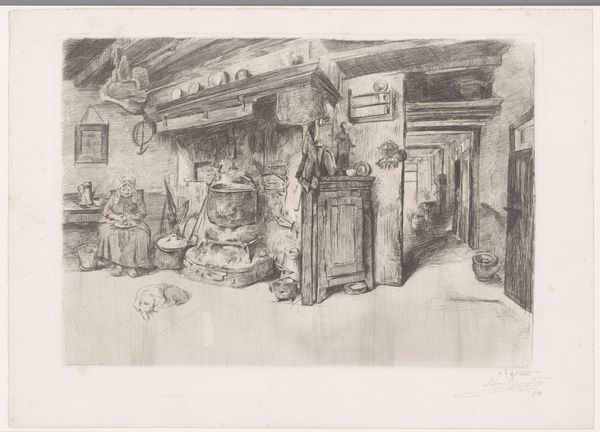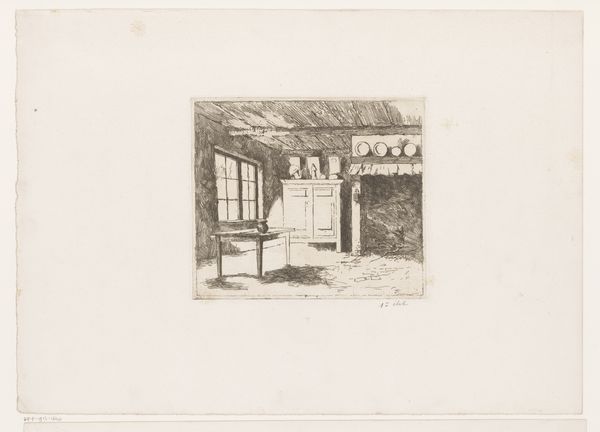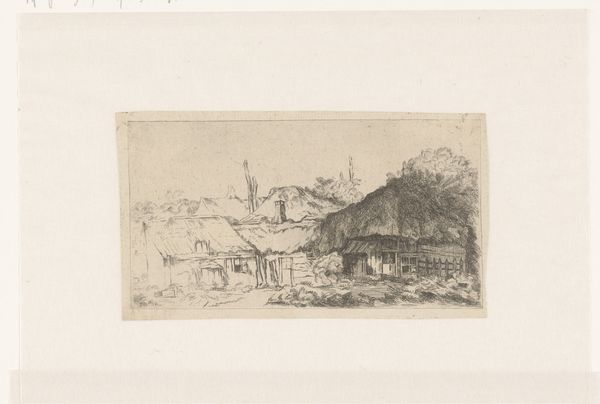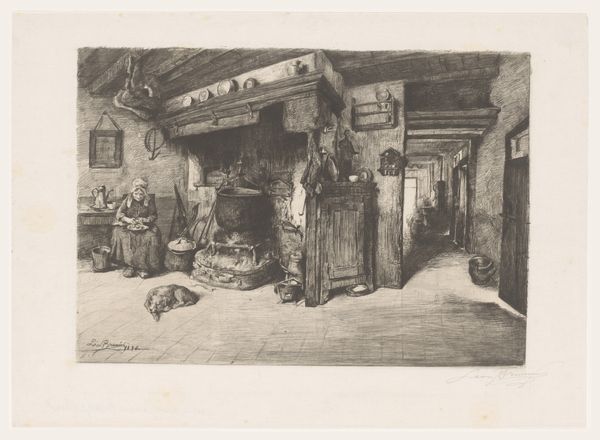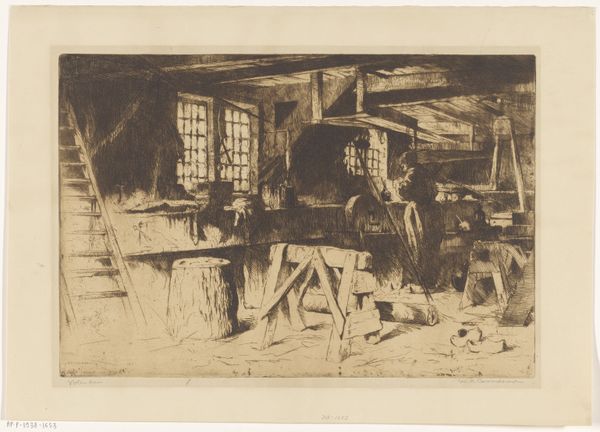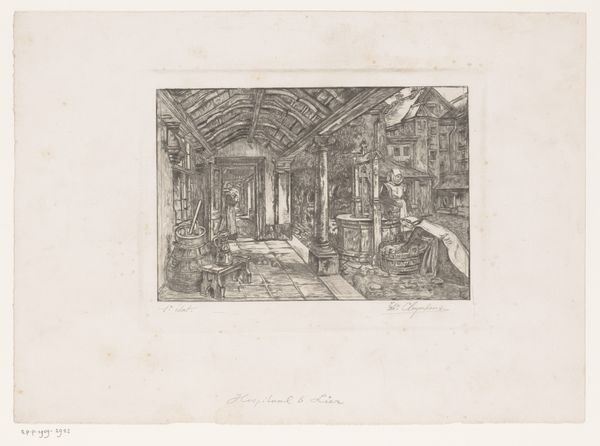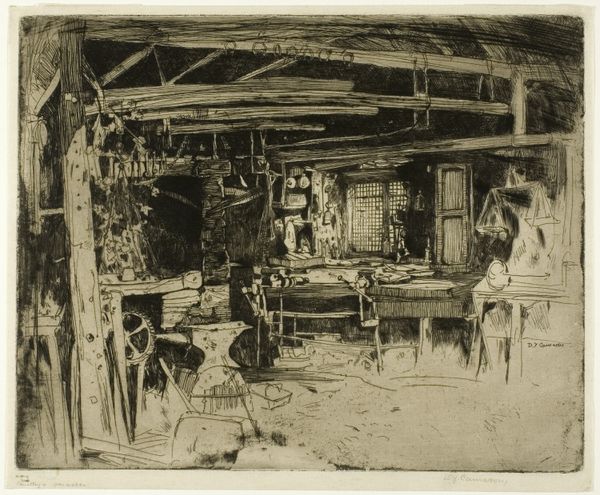
drawing, paper, ink
#
drawing
#
landscape
#
paper
#
ink
#
folk-art
#
genre-painting
#
realism
Dimensions: height 235 mm, width 318 mm
Copyright: Rijks Museum: Open Domain
Curator: This drawing by Piet Verhaert, created in 1882, is titled "Interior of a Farmhouse with a Woman by the Hearth." The artist employs ink on paper to depict the scene. Editor: The starkness of the lines creates a sort of lonely feeling, doesn't it? Despite the warmth one would expect from a hearth, there's a rawness, a lack of embellishment that speaks to the difficult existence of the people living here. Curator: It certainly challenges any romantic notions of rural life. What strikes me is the centrality of the woman within the domestic sphere. The hearth is not just a source of physical warmth; it is a symbol of her labour, her constant activity to sustain life. Consider how this reflects the broader narrative of women’s roles in 19th-century rural societies, a reflection of labour inequities rooted in deeply patriarchal traditions. Editor: The hearth itself is a compelling image. Historically, the hearth has symbolized the home, the center of the family, even female power. I note how he positioned the hanging kettles and plates right over the woman. They echo the shape of her headscarf and shoulderline. Curator: That’s a great reading, the careful curation of the imagery indeed connects the subject to these household implements. What does that symbolism then represent within a social context of an exploited and marginalized group. Editor: Perhaps the connection emphasizes how, through domestic objects and practices, the woman embodies the cultural continuity of the home? There's resilience suggested in her steady presence by the fire, even in the face of evident hardship. The act of cooking transcends mundane repetition. In an environment seemingly untouched by modernization, these everyday routines, this visual memory, becomes history itself. Curator: Precisely! The visual language invites us to critically examine how domestic spaces were not just neutral sites of comfort but sites of intense labour, unequal power dynamics, and also potentially female agency. Verhaert’s representation contributes to a vital discussion. Editor: I appreciate the fresh perspectives afforded when we examine those overlooked spaces between labor and art, or home and history. Curator: Absolutely. The beauty in the work becomes apparent after confronting these layers of inequity within our art historical assessment.
Comments
No comments
Be the first to comment and join the conversation on the ultimate creative platform.



